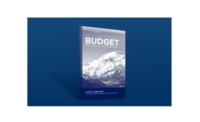President Obama has proposed a $3.8-trillion budget for fiscal year 2011 that would freeze total “non-security” domestic discretionary spending—the category that includes most federal construction programs—and result in cutbacks in most of the key construction accounts. Industry sources say the proposed reductions are not surprising given current economic realities, and they point to a few bright areas in the budget’s long list of cuts.
“Like every other presidential budget, it’s a mixed bag for construction,” says the Associated General Contractors CEO Stephen Sandherr. AGC estimates the 2011 budget’s construction-related funding totals $112.4 billion, down 7.5% from the enacted 2010 levels.
“The positives from our standpoint,” he says, “are that it appears in many areas, the President has backed up his rhetoric on recognizing that infrastructure investment leads to economic growth. On the other hand, we see some cuts in some programs—most notably the Corps of Engineers—that concern us.”
Obama’s proposal, transmitted to Congress on Feb. 1, does recommend boosting a few construction programs, including the federal-aid highway obligation ceiling. It also calls for creating a $4-billion National Infrastructure Innovation and Finance Fund for transportation projects “of regional and national significance.”
Administration officials have said the discretionary freeze would not apply to the Depts. of Defense, Homeland Security and Veterans Affairs as well as international affairs programs. They also said it would allow some increases for Obama’s priority programs.
One program for which the White House is seeking significant reductions is the Corps of Engineers’ civil-works program. The budget would slice Corps construction spending 17%, to $1.7 billiion, from $2 billion enacted in 2010.
The budget requests $10 billion for the Environmental Protection Agency, down from 2010’s enacted $10.3 billion. Roughly one-third of the agency’s budget would go to the clean-water and drinking-water state revolving funds (SRFs). The budget would allocate $2 billion for the clean-water SRF, a 5% cut from 2010 levels, and $1.2 billion for the drinking-water SRF, a 7% reduction.
Adam Krantz, the National Association of Clean Water Agencies managing director for government and public affairs, says that despite the modest cuts, the 2011 amounts the budget proposes represent a big improvement over the amounts appropriated before 2010. “We’re still looking at close to a tripling of where [the] clean-water SRF was at its low” of about $650 million, Krantz observes. “We’re glad to see [the SRF programs] are still an important and critical part of EPA’s budget,” he says. “Given the economic situation, [the budget] has to be realistic.” That said, the overall gap between what is needed versus funding levels is still enormous, he notes.
Some Pluses Amid the Minuses
The EPA budget also sets aside additional funds for developing standards to control greenhouse-gas emissions and other pollutants. The proposal includes $21 million, up $4 million from 2010 enacted levels, to implement the Mandatory Greenhouse-Gas Reporting Rule, and $25 million to help states with permitting activities for greenhouse-gas emissions under the New Source Review and Title V operating-permits programs.
Bill Becker, the National Association of Clean Air Agencies executive director, says the proposed $82.5-million increase for state and local air programs would be used for initiatives such as greenhouse-gas reduction...























Post a comment to this article
Report Abusive Comment